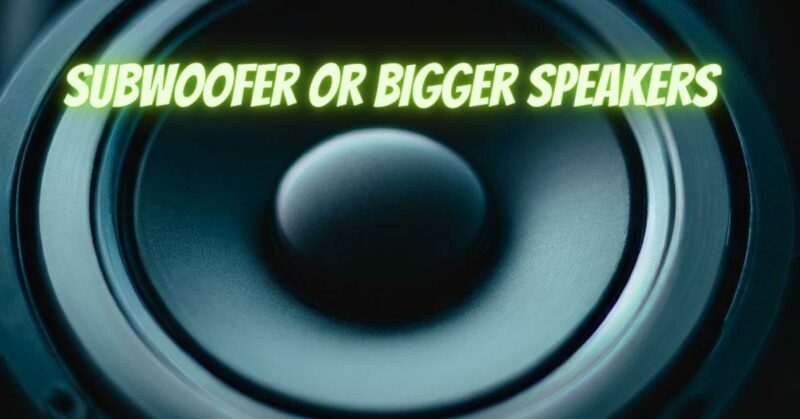Bass cabinet speaker configurations play a pivotal role in shaping the bass response and overall sound of your audio setup. Whether you’re a musician, a sound engineer, or an audiophile, understanding the different speaker configurations available is essential for achieving the desired bass performance. In this article, we will explore common bass cabinet speaker configurations and their respective advantages to help you make an informed decision.
Single Speaker Cabinet (1×12, 1×15, 1×18)
- 1×12: A single 12-inch speaker cabinet is a versatile choice that balances portability and bass response. It offers a well-rounded sound suitable for various music genres.
- 1×15: A single 15-inch speaker cabinet provides deeper bass response than a 12-inch cabinet, making it ideal for genres like rock, blues, and reggae that require a strong low end.
- 1×18: A single 18-inch speaker cabinet delivers powerful and extended low frequencies, making it suitable for genres like electronic dance music (EDM), hip-hop, and dub.
Dual Speaker Cabinet (2×10, 2×12, 2×15)
- 2×10: A 2×10 cabinet combines two 10-inch speakers, offering a balanced sound with improved dispersion. It is a popular choice for bassists seeking clarity and articulation.
- 2×12: A 2×12 cabinet features two 12-inch speakers, providing enhanced bass projection and midrange presence. It is versatile and suitable for various music styles.
- 2×15: A 2×15 cabinet combines two 15-inch speakers for even deeper bass response. It is excellent for genres that demand thunderous lows, such as heavy metal and reggae dub.
Multiple Speaker Cabinet (4×10, 4×12, 8×10)
- 4×10: A 4×10 cabinet features four 10-inch speakers and offers a well-rounded sound with a balance of punch and low-end depth. It is favored by bassists in various genres.
- 4×12: A 4×12 cabinet includes four 12-inch speakers, delivering significant power and projection. It is an excellent choice for rock and metal musicians who need a formidable stage presence.
- 8×10: An 8×10 cabinet combines eight 10-inch speakers for immense bass output. It is commonly used in large venues and is synonymous with the classic “Ampeg fridge” sound.
Advantages of Different Configurations
- Portability vs. Power: Smaller configurations (1×12, 2×10) offer portability and ease of transportation, while larger setups (2×15, 8×10) provide immense power and depth.
- Tonal Versatility: Different configurations cater to various musical genres and playing styles. Consider your preferred genre and the type of sound you aim to achieve.
- Room Size: Your choice should also consider the size of the venues or rooms where you’ll be performing. Larger cabinets may be overkill for small venues.
Selecting the right bass cabinet speaker configuration is crucial for achieving your desired sound and performance. Each configuration has its advantages, and the choice should align with your musical style, playing preferences, and practical needs. Experimenting with different setups and consulting with fellow musicians or sound engineers can help you find the perfect bass cabinet configuration for your specific requirements.


